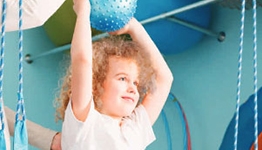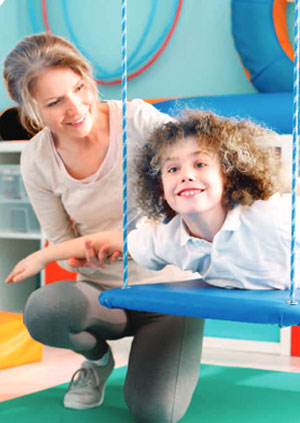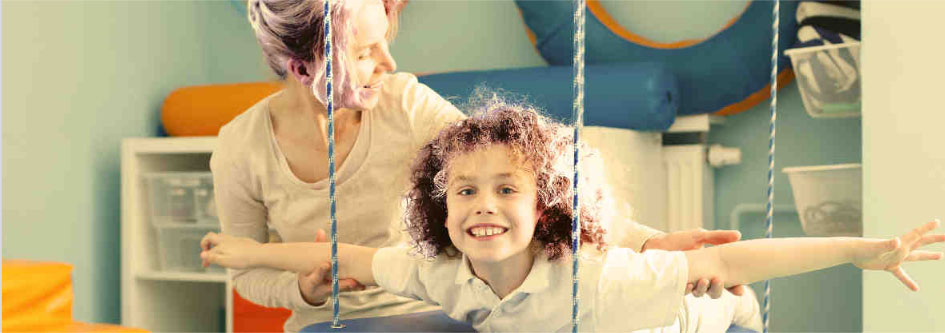AUTISM ‘I am different; not less

What is Autism?


Autism Spectrum Disorders are a range of complex developmental disorders that can cause problems with thinking, feeling, language, and the ability to relate to others.
They are neurological disorders, which means they affect the functioning of the brain. How autism disorders affect an individual and the severity of symptoms are different in each person.
Autism is usually first diagnosed in childhood. About 1 in 110 children is diagnosed with autism. Autism Spectrum Disorders are three to four times more common in boys than in girls.
Autism is a lifelong disorder in most cases, though there are more and more cases of children with Autism Spectrum Disorders who eventually function independently, leading full lives. The information here focuses more on children and adolescents.
Autistic Spectrum Disorders includes autism, PDD-NOS (pervasive developmental disorder not otherwise specified), and Asperger’s syndrome (the three most common). Asperger’s syndrome falls within the autism spectrum but is characterized by fluent language and no intellectual disability and is usually used to describe children who are fully included in school.
PDD-NOS has sometimes been used as a “working diagnosis” with young children, or children with milder forms of autism or children with less obvious repetitive behaviours
Symptoms
Autism differs from person to person in severity and combinations of symptoms. There is a great range of abilities and characteristics of children with Autism Spectrum Disorders—no two children appear or behave the same way. Symptoms can range from mild to severe and often change over time.
Characteristics of Autism Spectrum Disorders include:
- Communication problems – difficulty using or understanding language. Some children with autism focus their attention and conversation on a few topic areas, some frequently repeat phrases, and some have very limited speech.
- Difficulty relating to people, things, and events – trouble making friends and interacting with people; difficulty reading facial expressions; may not make eye contact
- Repetitive body movements or behaviours – hand flapping or repeating sounds or phrases
Many children with autism are attentive to routines and sameness and have difficulty adjusting to unfamiliar surroundings or changes in routine.
Many people with autism have normal cognitive skills, while others have cognitive challenges. Some are at greater risk for some medical conditions such as sleep problems and seizures.
Diagnosis
Early diagnosis and treatment are important to reducing the symptoms of autism and improving the quality of life for people with autism and their families. There is no medical test for autism. It is diagnosed based on watching how the child talks and acts in comparison to other children of the same age.
Trained professionals typically diagnose autism by talking with the child and asking questions of parents and other caregivers.
Causes
The exact causes of Autism Spectrum Disorders are not clear. Several factors probably contribute to autism, including the genes a child is born with and environmental factors. The risk of autism is greater if there is a family member with autism. Research has shown that it is not caused by bad parenting, and it is not caused by vaccines.
Treatment
While children are not typically cured and don’t outgrow autism, studies have shown that it can improve with early diagnosis and treatment. There is no single treatment for autism; treatments generally address behavioural and learning skills. Treatments can include intensive skill-building and educational sessions, known as applied behaviour analysis or ABA, and many more interactive,
child-centered versions of behaviour treatments. Treatment may also involve special training and support for parents, speech and language therapy, occupational therapy, and/or social skills training.
Also, some children and adults with Autism Spectrum Disorders have other kinds of psychological difficulties at some point in their lives, such as anxiety, attention deficits and/or hyperactivity, disruptive behaviours, or depression. These difficulties can be treated with therapy or medication.
There are currently no medications that directly In addition to treatment, regular and special education classrooms can be changed to help a student with autism.
Many students with autism can function better if the day is consistent and predictable. It is helpful if information is presented so that students can learn by seeing as well as hearing, and if students get to play and learn with non-disabled peers.
Use of complementary and alternative treatments, such as special nutritional supplements and diets, is common among children with autism. To date, there is little scientific evidence that such treatments are effective, and they can have negative consequences, so it is important to talk to your doctor before trying them.
Parent tips
- Learn as much as possible
- Provide consistent structure and routine
- Connect with other parents of children with autism
- Seek professional help
- Take time for yourself and other family members
Having a child with autism affects the whole family. It can be stressful, time-consuming, and expensive. Paying attention to the physical and emotional health of the whole family is important.
Many national organizations provide information, resources, and support to individuals with Autism Spectrum Disorders and their families.

Autism is a neurodevelopmental disorder affecting social communication, with repetitive patterns of behaviour.
Social communication:

- Inability of developing and maintaining relationships with others.
- Impaired non-verbal communicative behaviour
- Poor eye contact
- Total lack of facial expressions or use of gestures
- Poor integrated verbal or non-verbal communication.
- Impaired social and emotional reciprocity.
- Abnormal or failure of back and forth conversation
- Reduced sharing of interest
- Failure to initiate or respond to social interactions
Repetitive patterns of behaviour:
- Repetitive motor movements/ use of objects, or speech.
- Insistence of sameness
- Restricted fixated interests
- Hypo/hyper reactivity to sensory input
- Symptoms range in severity, so the support of each individual varies according to the severity of symptoms.
- Diagnosis mostly by the age of 2, but assessment can take place at any point of time, transitioning at age of 3 years.
- Diagnosis can be don’t using DSM criteria, behavioral observation, interview with caregivers, medical and behavioral history.
- The aim of diagnosis is to determine the medical course of treatment or required services.
- 30% of autistic children have mental subnormality by different degrees.
- The average prevalence of autism is 1:68 child
- Male: female ratio is 4:1
- Not all school aged children with autism require special education.
- Education performance doesn’t mean academic performance only, but also includes personality, emotional and social intelligence development.
- Social and academic challenges may increase need for support and services.
- Many children begin first grade without offivial diagnosis
- 25% of autistic children have speech delay, which may be the cause of discovering the diagnosis of autism.
- Most of autistic children suffer from irritability, insomnia, and may be accompanied by attention deficit hyperactivity disorder (ADHD).
“Autism is part of my child. It’s not everything he is. My child is so much more than a diagnosis.”



